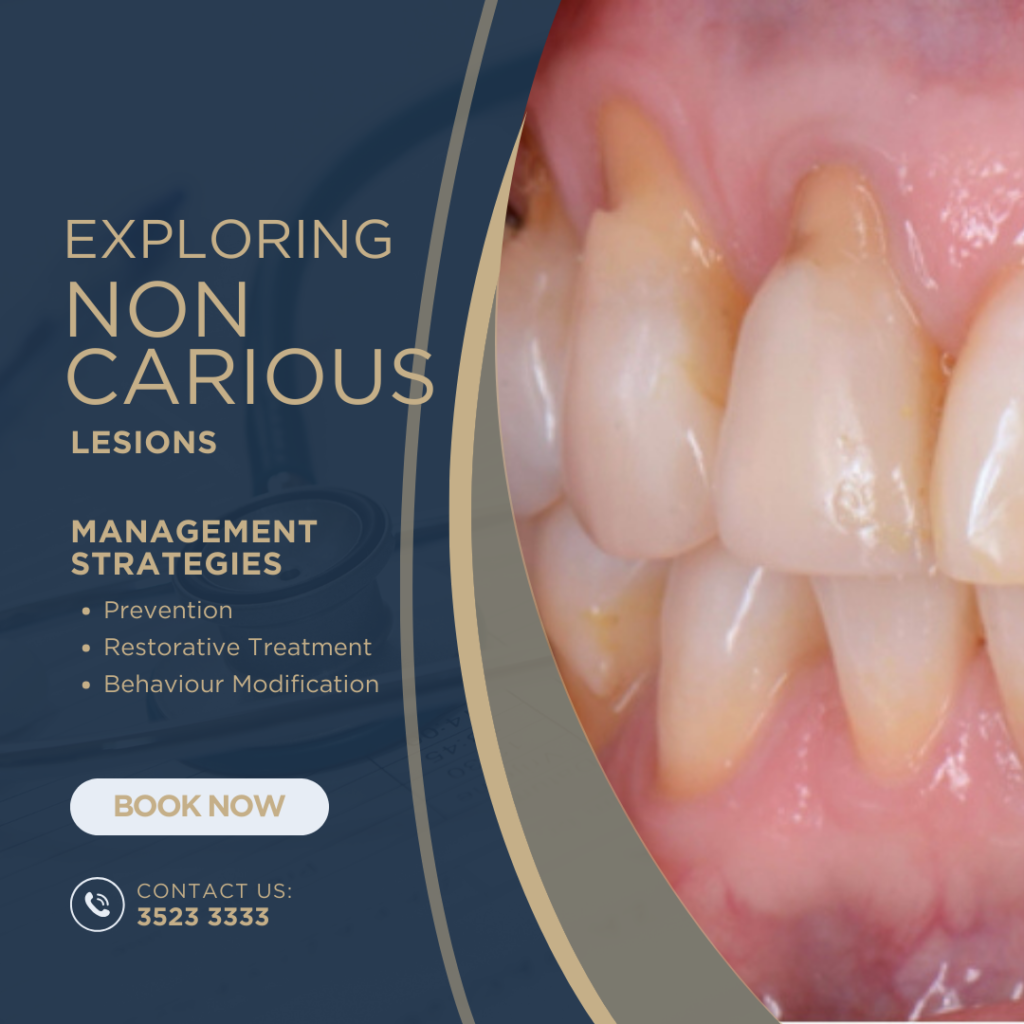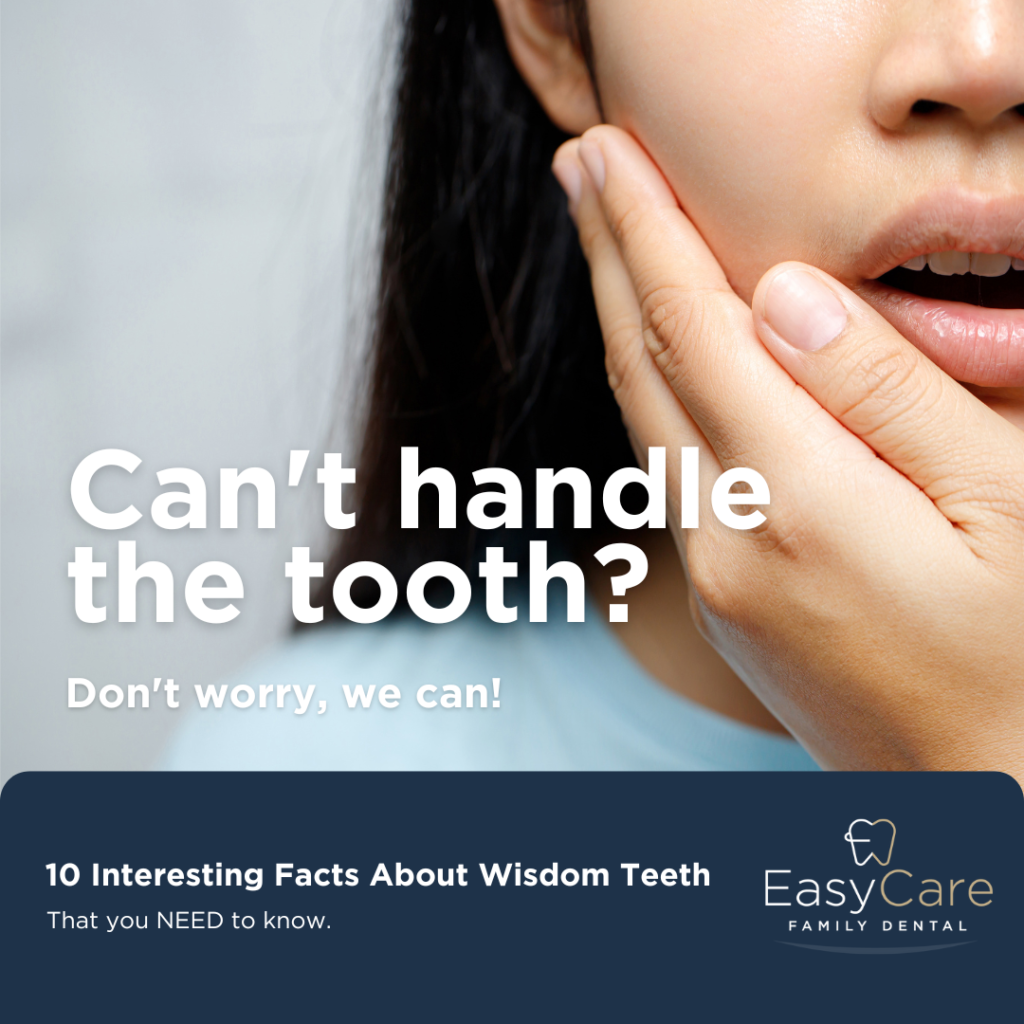Exploring Non-Carious Lesions: Understanding, Diagnosis, and Management
Introduction
You may have heard of cavities, but what about non-carious lesions? These dental abnormalities, while less commonly discussed, can still have a significant impact on oral health. In this blog, we’ll delve into what non-carious lesions are, how dentists diagnose them, and strategies for managing them effectively. Drawing on insights from Australian sources and journals, let’s explore this fascinating topic together.
Understanding Non-Carious Lesions
Non-carious lesions refer to dental defects that occur without the involvement of dental decay. Instead, they may result from various factors such as abrasion, erosion, attrition, or abfraction. These lesions can manifest as loss of tooth structure, discoloration, or sensitivity, affecting both the appearance and function of the teeth.
Diagnosis
Diagnosing non-carious lesions requires a comprehensive dental examination. Dentists will assess the patient’s medical history, conduct a visual examination of the teeth, and may use diagnostic tools such as dental X-rays or intraoral cameras to evaluate the extent of the lesions. Additionally, dentists may inquire about lifestyle habits (e.g., diet, oral hygiene practices) and potential sources of tooth wear.
Common Questions and Answers
Q: What causes non-carious lesions? A: Non-carious lesions can result from a variety of factors, including abrasive tooth brushing, acidic diet, teeth grinding (bruxism), or improper bite alignment.
Q: Should I be worried if I have non-carious lesions? A: While non-carious lesions may not be as concerning as cavities, they can still compromise oral health if left untreated. Seeking prompt dental evaluation and appropriate management is essential to prevent further damage and maintain tooth integrity.
Q: Are non-carious lesions painful? A: Non-carious lesions may or may not cause pain, depending on their severity and location. Some patients may experience tooth sensitivity or discomfort, especially when consuming hot, cold, or acidic foods and beverages.
Q: Can non-carious lesions be prevented? A: Yes, non-carious lesions can often be prevented with good oral hygiene practices and lifestyle modifications. Brushing with a soft-bristled toothbrush, avoiding abrasive toothpaste, and limiting consumption of acidic foods and beverages can help reduce the risk of enamel wear and non-carious lesions.
Q: How can I tell if I have non-carious lesions? A: Non-carious lesions may present as visible signs of tooth wear, such as enamel loss, discoloration, or surface irregularities. Additionally, patients may experience symptoms such as tooth sensitivity, especially to hot, cold, or acidic stimuli. Regular dental check-ups and examinations are essential for detecting and diagnosing non-carious lesions.
Q: Will non-carious lesions worsen over time if left untreated? A: Yes, non-carious lesions have the potential to worsen over time if left untreated. Without intervention, enamel wear and tooth structure loss may progress, leading to increased sensitivity, aesthetic concerns, and compromised oral health. Seeking timely dental evaluation and appropriate management is crucial for preventing further damage.
Q: Can non-carious lesions affect children’s teeth? A: Yes, non-carious lesions can affect children’s teeth, especially if they consume acidic foods and beverages or engage in habits such as teeth grinding (bruxism). Parents should monitor their children’s oral health and encourage healthy habits to prevent the development of non-carious lesions.
Q: Can non-carious lesions be caused by orthodontic treatment? A: Yes, orthodontic treatment, such as braces or aligners, can sometimes contribute to the development of non-carious lesions. Pressure from orthodontic appliances or improper oral hygiene during treatment may result in enamel wear or surface irregularities. Dentists and orthodontists can provide guidance on minimizing the risk of lesions during orthodontic treatment.
Q: How can I protect my teeth from non-carious lesions? A: Protecting your teeth from non-carious lesions involves practicing good oral hygiene, maintaining a balanced diet, and avoiding habits that contribute to enamel wear. Using a soft-bristled toothbrush, limiting consumption of acidic foods and beverages, and wearing a mouthguard if you grind your teeth can help protect against non-carious lesions.
Q: Are non-carious lesions reversible with treatment? A: While non-carious lesions cannot be reversed, early intervention and appropriate treatment can help prevent further damage and restore tooth function and aesthetics. Dentists may recommend restorative procedures to repair affected teeth and protect against future enamel wear.
Management Strategies
- Prevention: Educating patients about oral hygiene practices, dietary modifications, and habits that may contribute to non-carious lesions is crucial for prevention. Encouraging the use of soft-bristled toothbrushes and fluoride-containing toothpaste can help minimize enamel wear.
- Restorative Treatment: Depending on the severity of the lesions, dentists may recommend restorative procedures such as dental bonding, fillings, or dental crowns to repair damaged tooth structure and restore function.
- Behavior Modification: Addressing underlying habits such as teeth grinding or acidic diet can help mitigate further damage to the teeth. Dentists may recommend lifestyle changes or prescribe protective appliances (e.g., mouthguards) to prevent additional wear and tear.
Conclusion
Non-carious lesions may not be as well-known as cavities, but they warrant attention and proactive management. By understanding the causes, diagnosing accurately, and implementing appropriate treatment strategies, dental professionals can help patients maintain optimal oral health and preserve their smiles for years to come. If you have been diagnosed with non-carious lesions, don’t hesitate to consult your dentist for personalized guidance and care. Your smile deserves it!



